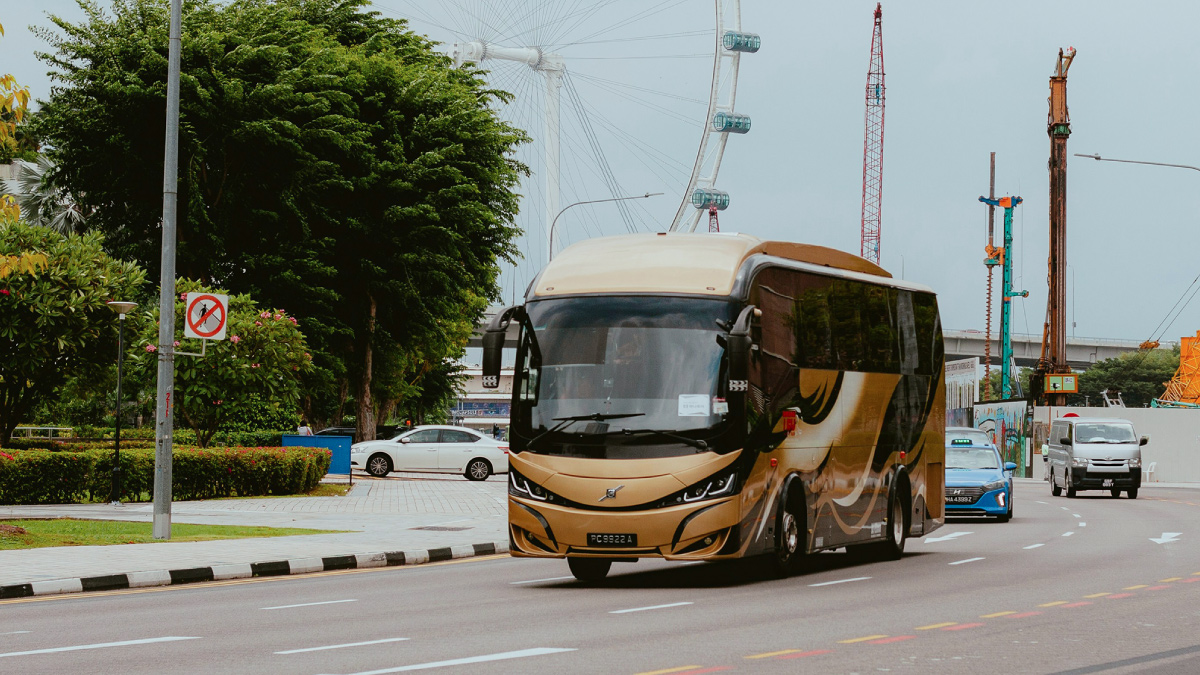
Corporate Event Transportation Services: Smooth and Stress-Free Travel
When I plan a corporate event, transportation is often one of my biggest worries. Corporate event transportation services can solve that by handling all the details of getting people where they need to go. I’ve learned that a smooth, reliable ride sets the right tone for a great event. At Wavebus, we make it easy: we book the buses, coordinate the schedule, and take care of every stop so you don’t have to.
We offer tailored shuttle and charter bus options for corporate events of any size. Whether you have a small leadership offsite or a large conference, our fleet of coaches and minibuses keeps your team together and on schedule. Here are some of the key benefits our corporate event transportation services bring:
- Punctuality and peace of mind: We handle traffic, parking, and routes so your guests arrive on time, every time.
- Professional drivers: Our experienced drivers know Singapore’s roads and prioritize safety.
- Comfort and amenities: Relaxing seats, air conditioning, and even onboard Wi-Fi mean attendees arrive refreshed.
- Team bonding: Riding together builds camaraderie before the event starts, turning travel time into productive time.
- Eco-friendly: One bus replaces many cars, reducing traffic and carbon footprint. It’s an easy way to support your company’s green goals.
If you want tips on organizing event transport, check our Planning Corporate Event Transportation guide. It covers everything from vehicle selection to scheduling. Basically, we take the stress of transportation off your plate so you can focus on the event itself.
How We Make Event Transport Easy
When you choose our services, you get more than just a bus. I work with you to map out pickup points, times, and routes. We can handle multiple stops – for example, picking up staff from different offices or hotels and bringing them together at the venue. If your event has a fancy dinner afterward, we can provide buses for both legs of the trip. Because we know every event is unique, we’re flexible: just give us your details and we’ll build a plan that fits your schedule.
Many clients find that using our buses is actually cost-saving. Instead of reimbursing dozens of taxi fares or paying for parking, a single bus is much more economical. Our prices per person are often lower than taxis once you fill up enough seats. And no one has to figure out their own way – everyone travels together.
Corporate event transportation keeps the group traveling together for comfort and efficiency. With Wavebus, I know everyone will arrive on time and ready to engage.
We also pay attention to the little things that matter. All our buses are well-maintained and equipped with safety features. And did I mention safety? All our buses meet strict Land Transport Authority standards and are fully insured. Our professional drivers have spotless records and follow safety protocols at all times. We can also arrange extras like onboard water, snacks, or a shared music playlist if you want a special touch. If the event is VIP-heavy, we can even provide a more luxurious coach for your VIPs.
Recently, I planned transportation for a 100-person conference. By scheduling shuttles from the main hotels, everyone arrived early and the client told me the day “ran like clockwork.” Success for you is success for us. Let us handle the ride so you can enjoy the event itself.
Ready to relax about transportation? Contact Wavebus to request a free quote for your next corporate event. We’ll make sure your attendees enjoy the journey as much as the destination.
FAQs
- Q: How far in advance should I book transportation for my corporate event? A: It’s best to book as early as possible, especially if you have a busy date or need multiple buses. We recommend 2–3 months ahead, but we can often accommodate shorter notice for urgent requests. Just reach out, and we’ll find the best buses for you.
- Q: What types of vehicles do you offer for corporate events? A: We have everything from 13–seater minibuses to 40–45 seat coaches. Smaller groups can choose a minibus, while larger groups can take big coaches. All vehicles come with air-conditioning, reclining seats, and can include features like USB charging or Wi-Fi. You’ll get exactly the right size for your team.
- Q: Is Wi-Fi available on your corporate event buses? A: Yes! Many of our coaches have onboard Wi-Fi and USB outlets. Attendees can stay connected or finish up work during the ride. It’s one more way we keep your team happy and productive on the road.
- Q: What if there’s a schedule change or someone is late? A: No problem. Our drivers are experienced and flexible. If someone is running late or you need to adjust a pickup time, just let us know. We can often shift things on the fly. In a recent event, one of my clients had a last-minute agenda change and we easily updated the route, keeping everyone on time.
- Q: Why choose Wavebus for corporate event transportation? A: We make it easy and reliable. Our clients appreciate our friendly service and attention to detail. One satisfied customer said our transport “significantly enhanced the attendees’ experience”. We always put your team’s needs first.
- Q: How can I request a quote? A: It’s simple! Just contact us through our website or email with your event details (date, time, number of guests, etc.). We’ll send you a free, no-obligation quote tailored to your needs.
If you’re ready for a smoother event, request a free quote at Wavebus.sg and let us handle your transportation needs!
Book Your Bus in Minutes – Safe, Clean, Reliable
Or WhatsApp us at 8925 8080